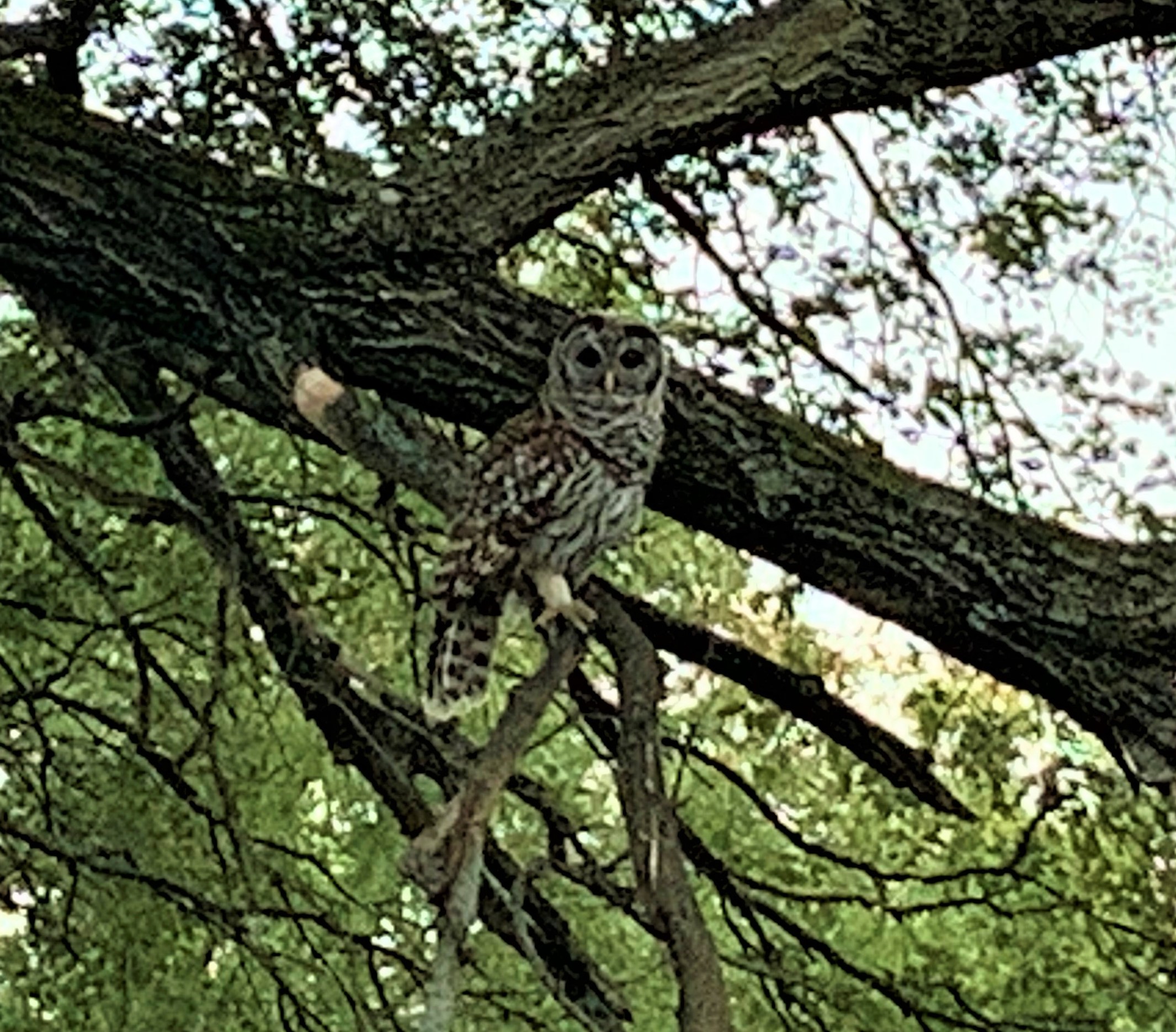The barred owl is one of my favorites. I love to hear its easily recognizable call and its mate’s response. This year we’ve had at least one pair calling in the afternoons and evenings. They call and respond, and once in a while they have a more heated conversation and even a bit of squawking. They are living in trees in the woods, and spice the evening with their calls. I wonder who they are and what they’re saying as they ask their question—“who cooks for you?” Who cooks for them? What are they up to?
The owls I’m hearing weigh from one to two and a half pounds and are 16 to 19 inches long. Their wing span is up to three and a half feet. They have rounded tails and rounded heads without the ear tufts that give the great horned owl its name. Decked out in brown feathers with white bars or stripes, barred owls camouflage well in the trees in my woods. Not only are they harder to see than the cardinals and jays, they are nearly impossible to hear when flying.
Although they blend seamlessly into their surroundings, they don’t miss a thing with their keen binocular vision and acute hearing, they can sit high in a tree and watch for a mouse in the grass far below, pinpoint it exactly, dive silently and capture it. Birds like hawks make a whooshing sound when they dive for prey because of the air turbulence they cause. It’s rather like the wake of a speed boat in the water. The owl dives silently because of their large wings and the unique characteristics of their feathers. With large wings, they can glide rather than flapping constantly. Small cone-like serrations on the leading edges of their wings break up the turbulence of the air passing over them, and the trailing edges of their wings are fringed, further dampening the sound. Soft downy feathers on their wings and legs also dampen high-frequency sound as they fly. The combination of these factors creates nearly silent flight.
Barred owls usually hunt in the evenings, looking for mice, voles, and other small critters like rabbits, squirrels, chipmunks and smaller birds. Meanwhile, they are in turn hunted by their larger cousins the great horned owls, who will happily eat their eggs and their young.
To protect their brood, the barred owls choose nests in cavities high up in trees. They may scout the nest site well in advance of settling on it. They mate for life, and will raise a brood of up to five owlets each year. They don’t usually migrate, but hang around all winter, courting and breeding. Their abundant down feathers keep them toasty warm in the coldest weather.
Owls are well-known worldwide, and more often than not, legends characterize them as harbingers of death, bringers of disaster, snatchers of children, or messengers from the dead. Their eerie calls range from the witchy screech of the little owl of that name, through the who-cooks-for-you call of my barred owl, “
Not only these eerie and sometimes frightening calls make owls seem scary, but the fact that they can fly silently, and that they can turn their heads in a 270-degree arc give you the sense of being watched and that attack is imminent, especially at night.
It’s not all bad press, though. The Greeks gave the owl its reputation of wisdom by associating it with Athena, and we call a bunch of owls together a Parliament of owls, which I assume means we think they’re as wise as our lawmakers.

1 comment